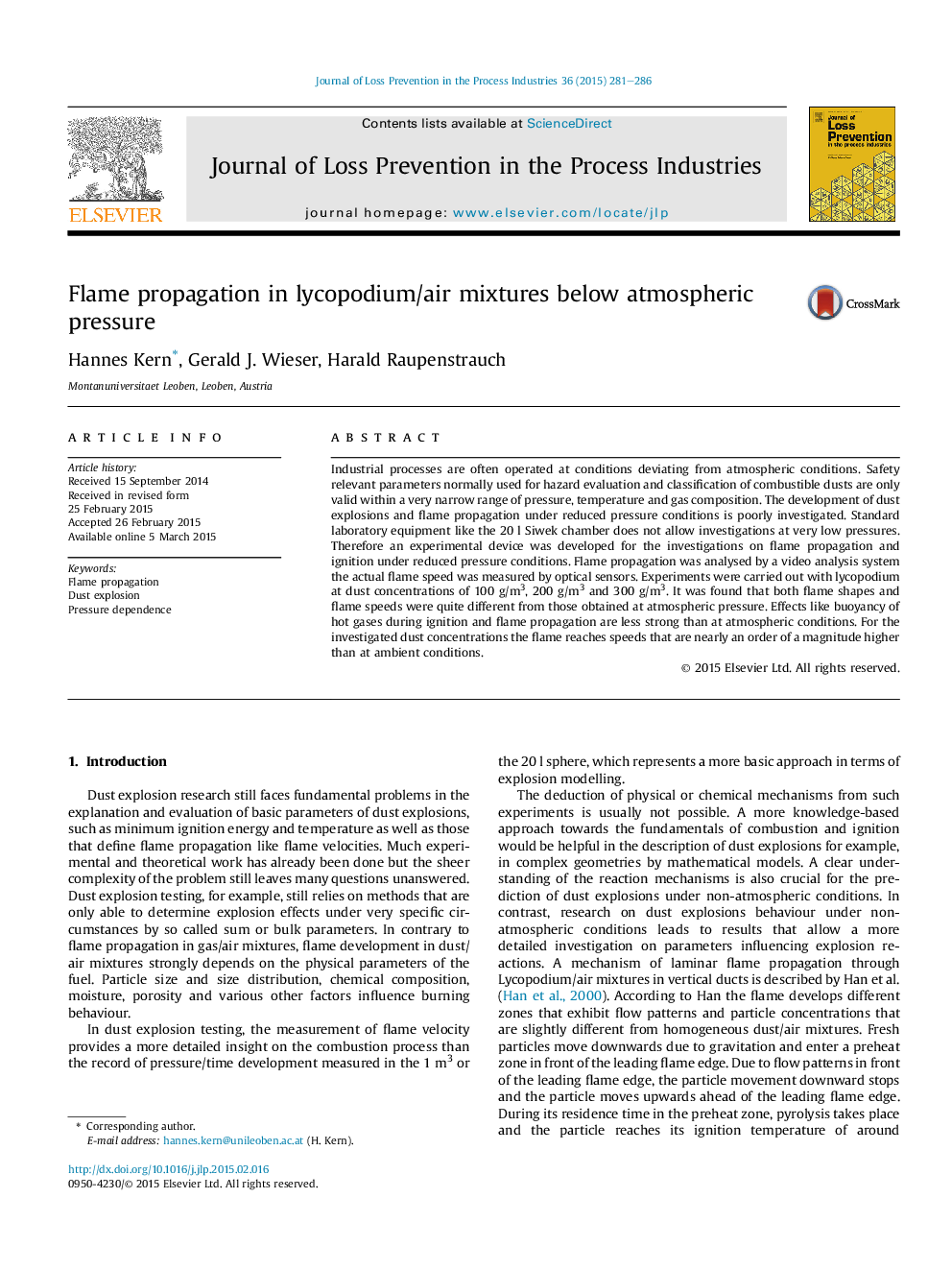| Article ID | Journal | Published Year | Pages | File Type |
|---|---|---|---|---|
| 6973182 | Journal of Loss Prevention in the Process Industries | 2015 | 6 Pages |
Abstract
Industrial processes are often operated at conditions deviating from atmospheric conditions. Safety relevant parameters normally used for hazard evaluation and classification of combustible dusts are only valid within a very narrow range of pressure, temperature and gas composition. The development of dust explosions and flame propagation under reduced pressure conditions is poorly investigated. Standard laboratory equipment like the 20Â l Siwek chamber does not allow investigations at very low pressures. Therefore an experimental device was developed for the investigations on flame propagation and ignition under reduced pressure conditions. Flame propagation was analysed by a video analysis system the actual flame speed was measured by optical sensors. Experiments were carried out with lycopodium at dust concentrations of 100Â g/m3, 200Â g/m3 and 300Â g/m3. It was found that both flame shapes and flame speeds were quite different from those obtained at atmospheric pressure. Effects like buoyancy of hot gases during ignition and flame propagation are less strong than at atmospheric conditions. For the investigated dust concentrations the flame reaches speeds that are nearly an order of a magnitude higher than at ambient conditions.
Related Topics
Physical Sciences and Engineering
Chemical Engineering
Chemical Health and Safety
Authors
Hannes Kern, Gerald J. Wieser, Harald Raupenstrauch,
